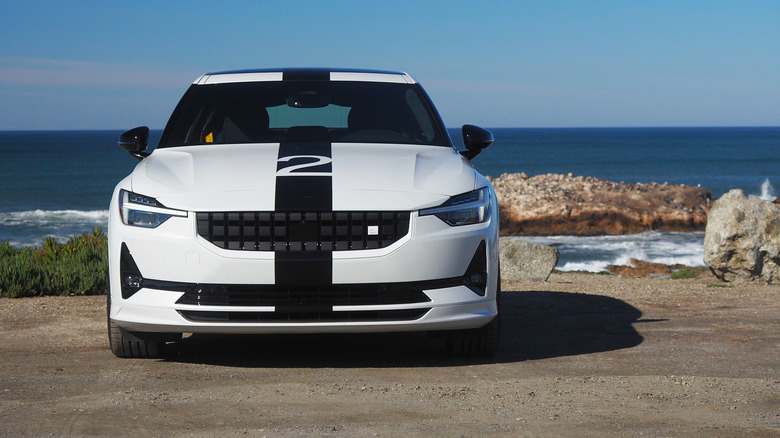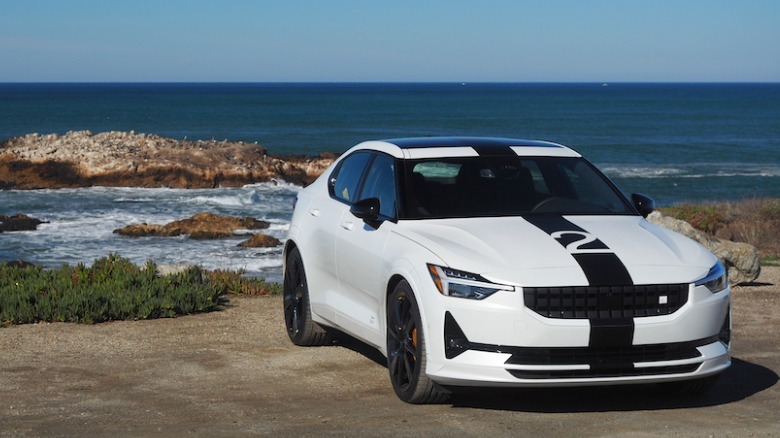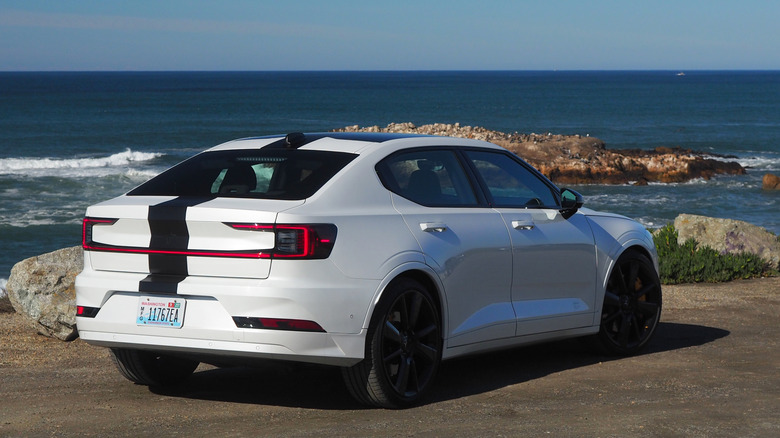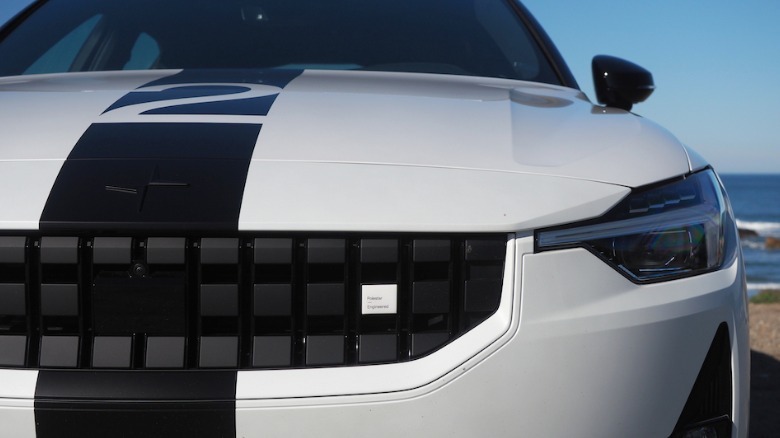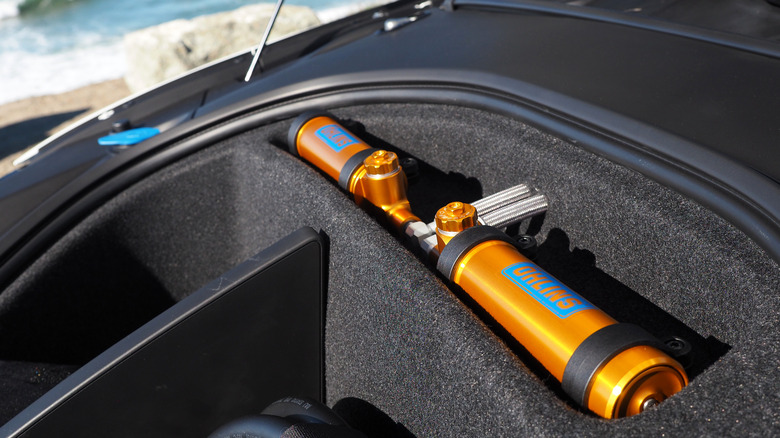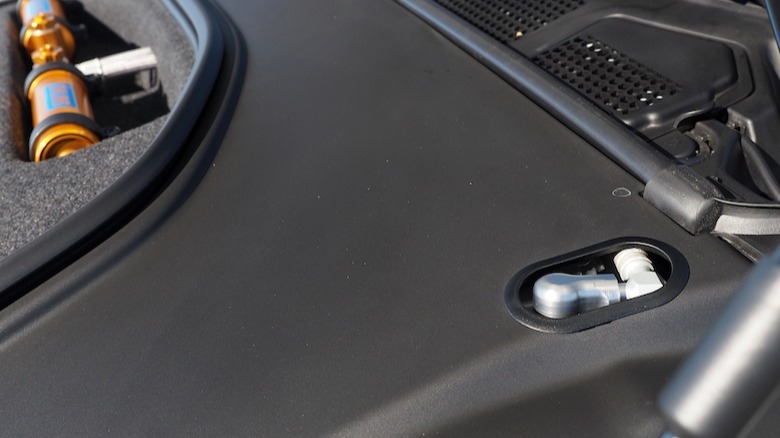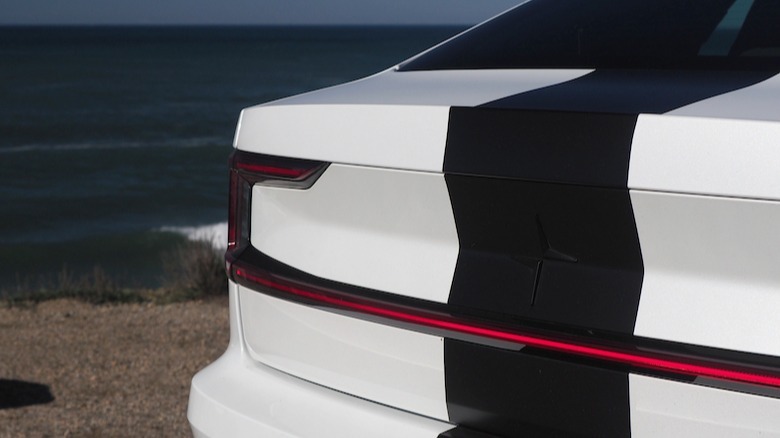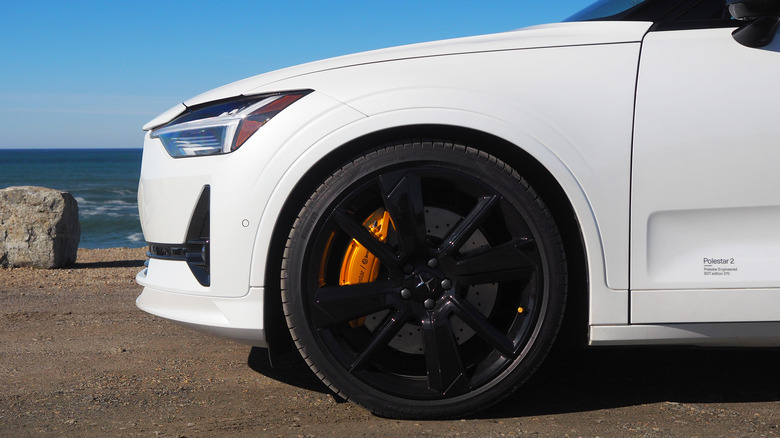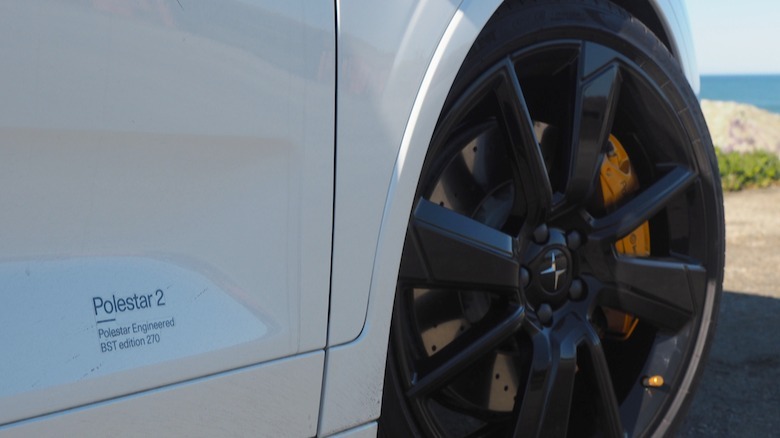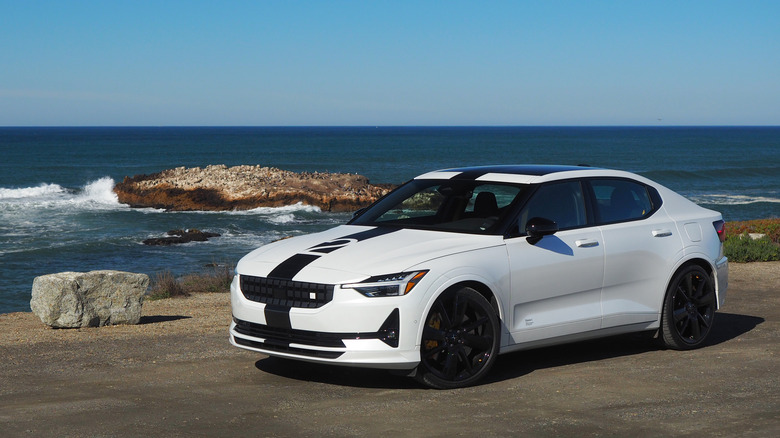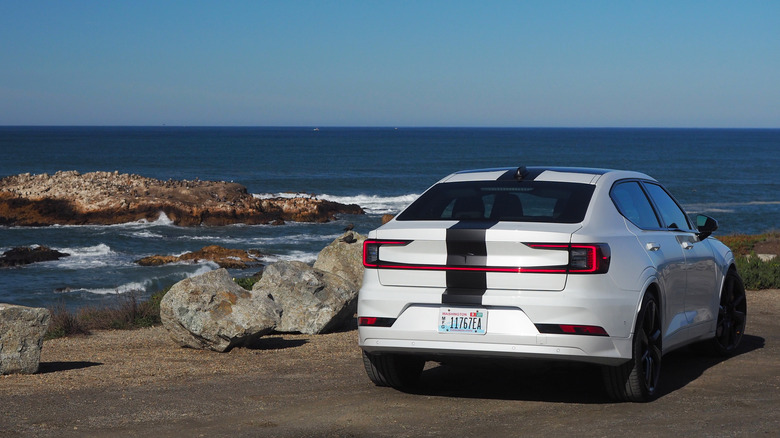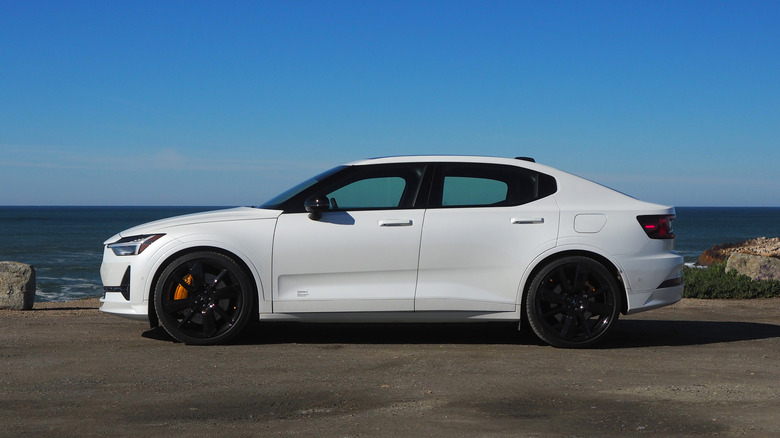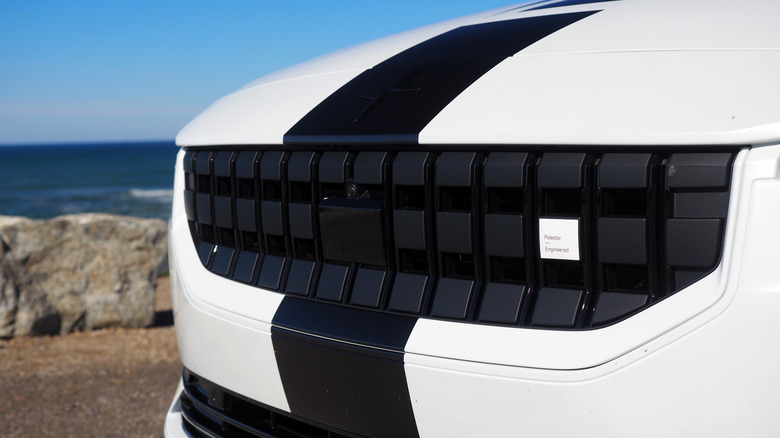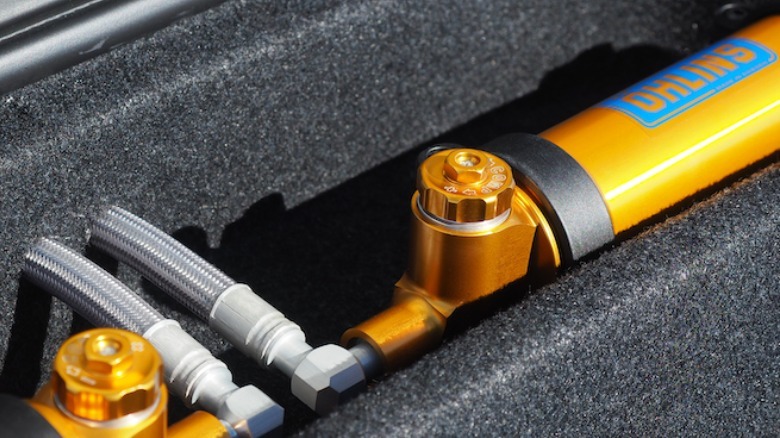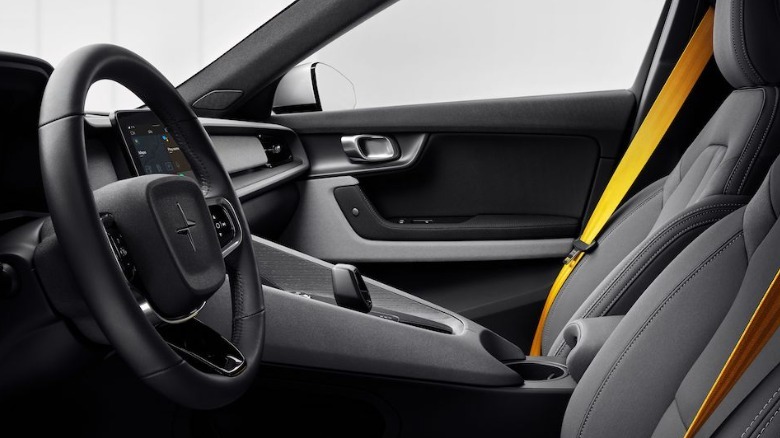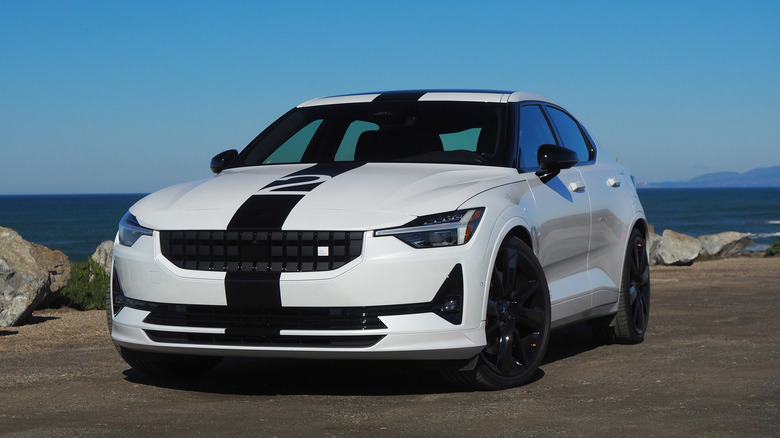2023 Polestar 2 BST Edition 270 First Drive: Electric Silliness
Polestar knows how to have fun, and the 2023 Polestar 2 BST Edition 270 is evidence of just what happens when you let EV engineers off their leash. The automaker's most affordable electric car — and, until the Polestar 3 arrives next year, its only electric car — already comes in a Performance pack flavor, but while faster and more focused it still has to please a broad audience of drivers. That begs the question: what can you achieve if you jettison any intention of being the right EV for most people?
The result is a limited, 270-car run of special Polestar 2 that is particularly well-traveled. Built on the same production line as the regular EV, each is then transported to the automaker's Chengdu production center — formerly used to build the now-discontinued Polestar 1 — to be customized into BST Edition 270 form. That also involves dissembling the suspension system so that it can be shipped to Öhlins in Sweden so that some of the car's most conspicuous modifications can be carried out.
It's a whole lot of effort — and one which, Polestar head of vehicle development Christian Samson concedes, means the resulting EV isn't exactly covering its costs despite a $75k+ sticker — but the result is as beguiling as it is preposterous. An electric car that intentionally sidesteps all the usual metrics for what a "performance vehicle" should be these days, and instead drags Polestar's tuning heritage back into the spotlight. One which, in the process, could well leave enthusiasts feeling a little more reassured about the rise of electrification itself.
Stealthed or striped
First, though, a missed opportunity. Polestars of old used to come in a beautiful, head-turning cyan blue, referred to — with tongue firmly in cheek — as "Swedish racing green" by the tuners themselves. It's a hue conspicuous by its absence these days.
Instead, Polestar's already-sober array of paint options has been pared back to just two — Snow white and Thunder gray — along with a satin 3M Battleship Gray wrap option for the gray finish. If you're feeling daring, there's a matte black stripe available too, with a crisply excised "2" graphic in the center of the hood.
Personally, I'd skip it and go as inconspicuous as possible. Even with the bodykit modifications, the lower ride, and the bigger wheels, the Polestar 2's inherent stealth status remains. This is a car that other road users underestimate (at their peril) and the automaker's minimal badging revels in the surprise beneath that anonymity.
Swedish gold
Lift the hood, and your eyes skip over the frunk and up to the two gleaming gold reservoirs of the Öhlins BES Edition 2-way adjustable dampers system. Custom-made for the EV, borrowing race tech — which was then put through endurance testing to make sure it could handle exponentially longer road use — they improve the damping performance of the standard Öhlins dampers on the Performance package car. Polestar sensibly made a feature of their inclusion, as well as cutting out peekaboo slots through which you can see the pipework join each of the suspension columns.
You can't really see the Dual Flow Valve rear dampers, which have also been updated, but if you peer through those pipework cutaways you can just make out the new aluminum strut bar. That now spans the front suspension mounts, bolstering stiffness for an uptick in steering precision, balance, and overall rigidity.
Otherwise, though, a lot of what you see here is familiar stuff. The Brembo brakes are excellent, but also the same as you'd get on a Polestar 2 Performance pack car. The software is the same, too, and inside it's the same cabin with gold seat belts. Polestar fits its Plus and Pilot packs as standard, for things like Pilot Assist adaptive cruise and lane-keeping assistance, a 360-degree camera, a panoramic glass roof — bisected by that optional stripe — and a Harman Kardon sound system.
Happy coincidences
Polestar's fairly light-handed approach to modifications here has been for practical reasons more than anything else. Change the Polestar 2 too much, and it would have to have the car re-certified in one or more of the numerous, time-consuming, and generally tedious — but important — ways that new vehicles must navigate before they're permitted for sale. So, the software and propulsion systems are the same as in the already-approved Polestar 2 Performance Edition, you get the same 476 horsepower and 4.2 second 0-60 mph time, and what tweaks have been made are all careful massages.
That hasn't stopped the automaker from benefiting from some happy coincidences, mind. One of the changes with the biggest impact here is the new set of wheels and tires, 21-inch alloys — inspired by the Polestar 1's rims — shod in new Pirelli 245/35R21 P Zero rubber. It's a custom, stickier shoe made just for the BST Edition 270 and even bears Polestar's logo on the sidewall.
Problem is, grippier wheels are anathema to EVs because they cut range. Improve the stickiness too much, and Polestar would've had to dial things back in order to have the BST Edition 270 re-certified by the EPA, an impractical demand for a low-production car from a still-niche company. Imagine the Swedish-flavored delight, then, when it turned out that dropping the ride height by the planned 25 millimeters (or almost an inch) improved the aerodynamics to basically offset the range impact of the new rubber.
Don't try to be the best
If you're comparing on paper, the charms of the Polestar 2 BST Edition 270 could be diluted. It's not the fastest electric car — a Tesla Model 3 Performance is cheaper, and more than a second quicker 0-60 — and it hasn't got the most range. Even internally, Polestar's Samson admits, there were questions as to just how this particular EV was meant to be defining "peak performance" here.
The answer, he says, was that it isn't. Liberated from trying to be "the best," the Polestar team instead could focus on making something just plain fun, a strategy in no small part shaped by CEO Thomas Ingenlath's original "The Beast" project back in 2020. The one-off car that resulted — and which went on to inspire the Goodwood-storming Experimental Polestar 2 – was never made with topping some mythical group test results list in mind, but merely to put a smile on one man's face.
Happily for (some of) the rest of us, now we get to grin along too.
Classic Polestar
The BST Edition 270 is as close to "classic Polestar" as you can get, even if few drivers will know what that means. The new strut bar — which the automaker needs to start offering as an option on the regular EV, stat — and the upgraded suspension make for a car that's ridiculously stiff, and almost unsettling in how adeptly it shrugs off the not-inconsiderable curb weight from all those batteries. You feel the heft still, because that's how physics works, and yet the Polestar pivots and sashays despite it.
The steering, even at its heaviest setting, still feels a little light to my tastes, but then again I've had that complaint about every Polestar-tuned car I've driven. There's every chance you'll love it instead, and I can't question how precise it feels. Out in the rising and falling switchbacks above Redwood City, CA, where Polestar had invited us out to play with its new EV, the BST Edition 270 zips with murderous focus.
There's a degree of trust required, much as I found there was on the same roads in the Polestar 1 three years ago. A willingness to look beyond what the usual equation of power, weight, and devil-may-care cornering would normally add up to, and instead have faith in what the chassis engineers have done, here.
No shortage of focus
Even if you do overcook things, this feistiest of the Polestars can be brought back in line with minimal fuss. There's no true torque vectoring, not like the Polestar 1 wields so crisply with its twin rear electric motors, but the BST Edition 270 is easy to correct nonetheless. The automaker has wisely avoided any foolish attempt to "upgrade" the soundtrack artificially, too, despite the absence of barking tailpipes.
When the roads open up a little, slotting some sweeping curves in between the tighter stuff, it's a chance to admire the immediacy of an EV's power delivery and the way the Polestar ebbs and flows neatly. Really, the only thing this car dislikes is poor-quality roads, and even then that's more a complaint of your own, comparatively frail body, rather than a hit on the BST Edition 270's near-perennial poise.
There's no Sport mode, not specifically, only the ability to turn off the ESC system. In some cars that feels foolhardy; here, much less so.
The limits are mainly your own
Like Polestar projects of old — such as the gloriously hilarious 2016 Volvo V60 Polestar T6 — there's an uncompromising vision here, one which brooks little dissent. Other performance cars hedge when it comes to daily usability, with comfort modes and smoother suspension configurations to dial back the ferocity. The closest the BST Edition 270 gets to that is the ability to notch the steering weight back to a lighter setting.
You can adjust the suspension stiffness, but it's a mechanical process involving physically moving knobs. Bringing the Öhlins adjustment chambers under the hood makes some of that process a little easier, but it's still tough to imagine anyone actually doing it beyond on an occasional track day. As a result, even the midway stiffness setting — Polestar had it clicked to 7, with Samson saying that race use would likely be closer to 3, and any lower than that is effectively like driving without suspension at all — can leave what's still a heavy car hilariously kangaroo-like if you hit the wrong bump.
I can handle needing to be eagle-eyed for potholes but I wouldn't argue with additional lower bolstering in Polestar's seats. I also wish there was a little more gold going on. The Polestar 2's cabin is handsome and — courtesy of an Android Automotive OS-powered dashboard — tech-savvy, with recent updates finally delivering Apple CarPlay support among other improvements, but if I'm spending $75,500 (plus $1,400 destination) then I don't think I'd be alone in hoping for a more distinctive trim package.
More of this, please
The Polestar 2 BST Edition 270 is, quite frankly, a silly car. Bordering on ridiculous, even. And that, to be even more frank, is what makes it so good, and what makes me so very glad Polestar decided to green-light the project in the first place.
If it struggles to make complete sense as an electric performance car, that's perhaps because we've been demanding far too much seriousness from that segment. Judging those EVs not only against the internal combustion models they're meant to be supplanting but against each other in some earnest — but maybe misguided — assumption that to be the very best you must also appeal to the most people, too. The BST Edition 270, in contrast, feels like a skunkworks project carried out by a Polestar team reminiscing about its independent tuner past.
The result — like those Polestar-modded Volvos of old — is such a degree of personality that you can't help but have a strong opinion. And, even if your conclusion is "this is stupid," then that's fine; the automaker will happily sell you a far more balanced Polestar 2 or count on maybe getting you hooked when its handsome and even more advanced Polestar 3 SUV arrives late next year.
In parallel to that, though, there's an internal appetite for more of these off-kilter projects. Samson won't be drawn on how, exactly, that might manifest, but quite frankly the thought of this particular vein of tuning silliness is so appealing, I'll take it in whatever form it might come. Let's just hope whatever comes next has a bright blue paint option, just for old-time's sake.
